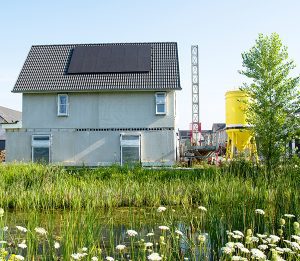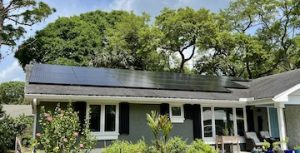As interest in renewable energy continues to grow, many people are turning to solar power as a viable energy source. Finding the right installer for your home is critical to having a positive experience. However, with so many choices, it can be challenging to decide. To help you decide, here are the factors you should consider when selecting a solar installer, such as SuperGreen Solutions.
The most important consideration when choosing a solar installer is their experience level. It’s essential to ensure the installer you select has plenty of expertise and research the quality of their solar products. SuperGreen is committed to only providing the highest quality products for your needs. Additionally, ensure the installer is insured so you are protected from any damages or injuries during installation. Check the terms of their insurance policy, and read the fine print. As an added assurance, SuperGreen is a member of the Solar Energy Industries Association (SEIA) and is responsible for ensuring the supplier meets the Solar Supply Chain Traceability Protocol.
Don’t forget to research the customer service record of your installer as well. You’ll want to ensure that they can respond promptly if you have any questions or concerns. Check for reviews online and ask for recommendations from people who have used them. Additionally, be sure to investigate the warranties and customer service policies that are offered before signing a contract. By taking all these steps, you can be sure your home will be powered by reliable solar energy for years.
Furthermore, ensure that the installer provides a complete range of services, from installation to maintenance and repairs. Request quotes from different installers and compare prices. Carefully read all the terms and conditions of the contract before signing it.
How does solar Work?
The sun’s power can be tapped and transformed into electricity through two primary technologies. Photovoltaics (PV) is probably the most widely known, as evidenced by its frequent presence on rooftops and in fields. When sunlight falls onto a solar panel, its photons are absorbed by the cells, forming an electric field between the layers and, thus, an electric current—further details on how PV functions can be accessed.
The second technology is concentrating solar power (CSP). CSP is primarily utilized in massive power plants but does not lend itself to residential applications. This method uses mirrors to focus sunlight onto receivers that capture the solar energy, convert it to heat, and then use that heat to generate electricity. Learn more about the CSP approach.
Is my house suitable for solar panels?
Solar panels are designed to operate in any climate; however, older rooftops or those overshadowed by nearby trees may not be suitable. The angle and pitch of the roof, along with its size and shape, are essential elements to keep in mind, with south-facing roofs typically best suited for solar systems with a 15-40 degree pitch. Additionally, the age of the roof and when it may need to be replaced should be considered.
Community solar is an excellent alternative for those unable to install solar energy due to roof incompatibility or lack of home ownership. Participants in these shared systems can divide costs associated with purchase and installation and select a level that meets their budget. SuperGreen Solutions, a member of SETO, is a global brand you can trust.
How much power can I generate with solar?
The National Renewable Energy Laboratory (NREL) created a resource known as PVWatts, which estimates the energy production and cost of grid-connected PV energy systems in any part of the world. This tool is invaluable to homeowners, small business owners, installers, and manufacturers as it estimates the possible performance of potential PV installations. Additionally, it allows users to evaluate solar costs compared to their current utility bills. Nevertheless, it is always beneficial to collaborate with a solar installer for an individualized analysis of the power output of a solar energy system.
NREL performs analyses with an average system size of 7.15 kilowatts direct-current that may range from 3-11 kilowatts. According to SETO awardee EnergySage, this power output is enough to cover the energy requirements of an average household in Austin, Texas.
Will I save money by going solar?
The savings you can make from installing solar panels are affected by various factors, such as the electricity you use, the system size if you buy or lease the panels, and the amount of sunlight they will receive. Prices and electricity rates in your area are published in the National Utility Rate Database.
In some areas, solar power is already more cost-effective than electricity the utility company provides. Costs have dropped annually since 2009, and installation costs, such as inspection and permits, are also lower. Programs funded by the SETO are trying to make solar even more affordable.
Furthermore, increasing energy efficiency with Energy Star appliances and products will require less solar energy to power your home.





